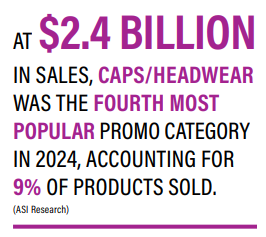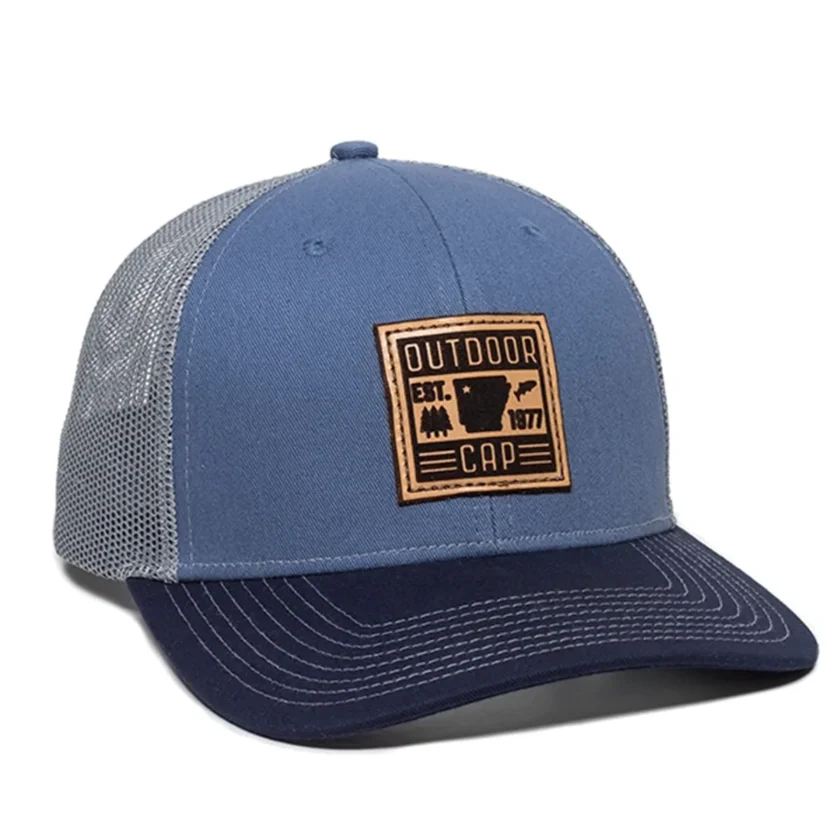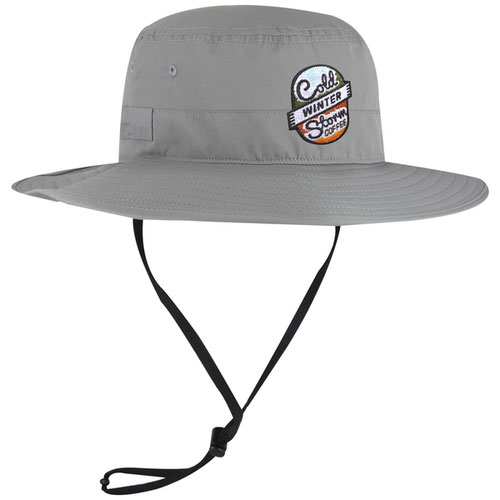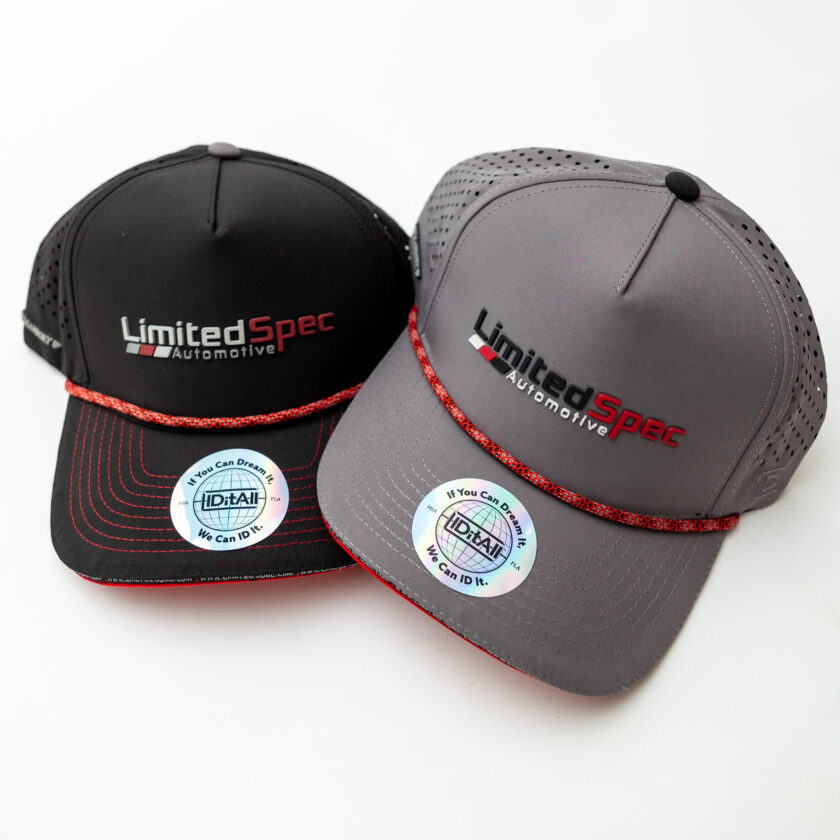Branded headwear remains one of the most effective and visible promotional products on the market. In fact, according to a recent ASI Global Ad Impressions Study, a single promotional hat generates 3,400 impressions over its average lifespan, delivering lasting brand exposure at a remarkably low cost. Unlike other apparel items, headwear offers uninterrupted visibility – a front-panel logo or message stays unobstructed, whether indoors or outdoors, in every season.
As casual dress codes continue to gain ground in offices, restaurants and public spaces where hats were once unwelcome, headwear is now a normalized, even expected, accessory. To stay ahead of style trends and service this growing category, supplier sourcing teams closely tracks U.S. cities that influence national fashion and consult insights from direct-to-consumer research firms like Worth Global Style Network.
“Our development team is always watching the headwear fashion coming from LA, Chicago and NYC, as well as niche markets like Atlanta, Nashville and even Phoenix, says Ben Roberts, chief marketing technology officer at Outdoor Cap (asi/75420), a Counselor Top 40 supplier for three consecutive years. “We aim to have our finger on the pulse of the styles, colors and brands currently selling – and what’s slated to sell – to better support our distributor partners.”

Surprisingly, given headwear’s ubiquity and branding opportunity, suppliers still find that it’s undersold. It’s not that the demand isn’t there, either. When Roberts first joined Outdoor Cap, he surveyed distributors to uncover how headwear orders were initiated.
“Our survey of customers and reps showed that only 32% of headwear orders originated from the distributor side, while 68% came from customer inquiries,” Robert notes. “That statistic blew me away. From that point on, we prioritized developing marketing resources using ASI-backed data to create trend reports and style guides that empower distributors to get ahead of demand and confidently pitch headwear in their markets.”

Know Thy Client
The success of branded headwear often comes down to how well it’s matched to its end-user. In industrial markets, durability and comfort are nonnegotiables. Truckers and rugged six-panel hats remain favorites among employees in labor-intensive jobs, who tend to be particular about fit and feel.
“When these guys find a hat they like, they’ll wear it until the thread gives out – and that’s actually the highest compliment,” says Jessica Barkhouse, branded merchandise consultant at Outstanding Branding (asi/288519) in Winnipeg, Manitoba.
Serving a rural region with long, cold winters, Outstanding Branding frequently supplies farming, drilling and manual labor companies with Richardson hats, beanies and mesh-back trucker caps in shades such as black, charcoal, navy and slate, accented with a pop of color on the hat’s brim or in the logo.
“The demographic is mostly middle-aged men, so a comfortable back strap and itch-free construction are essential,” Barkhouse adds.
When it comes to decoration, classic front-panel logo embroidery still leads the way. Jeff Huffmyer, president of Pittsburgh Print House (asi/789601), notes that headwear embroidery is currently outpacing apparel embroidery in his business. “About 90% of our distributor orders for corporate clients stick to traditional embroidery and screen printing,” he says. “But we love adding subtle twists to those classics.”
Huffmyer recommends 3-D puff embroidery for clients wiling to experiment within a traditional look, as it adds texture and depth, making logos pop without straying too far from what they’re used to. “Patches are also in high demand, especially faux leather ones with etched logos,” Huffmyer says. “We heat-apply them and often add a stitch over-lay for extra durability, particularly on thicker fabrics like trucker hats.”
Warm Weather Fashion
Roberts confirms that trucker hats remain the top seller nationwide across Outdoor Cap’s distributor network, and other strong performers include adjustable “dad caps,” lifestyle caps, beanies and performance caps for golf resorts and upscale retail shops. Even bucket hats and boonie sun hats continue to gain traction in warmer climates and year-round sunny markets.

In Miami, Devin Robbins, founder and CEO of decorator IDitAll, works with event planners, restaurant groups and bars, where he’s seen a surge in two-toned lifestyle caps and tech truckers – a performance-driven cap made from soft, flexible polyester. “The tech trucker is popular because it takes sublimation, DTF, silicone patches and other full-color decorations really well,” says Robbins. “Lifestyle caps have been around forever, but the two-toned versions have taken off in the past 18 months.”
A two-toned lifestyle cap features a features a traditional five-panel cotton design with a solid-colored body – often tan, khaki or a jewel tone – paired with a contrasting bill. Soft shades like beige, cream and gray are especially popular, aligning with retail’s shift toward natural, earth-based tones and sustainable aesthetics. Custom cut-and-sew programs offer even more opportunities for brand color matching. “For decoration, a clean front-crown embroidery in the same color as the bill’s accent creates a refined, elevated look,” Robbins says. “It’s a versatile style you can wear anywhere: to work, dinner, errands or travel. A lot of people will see that logo.”
Decorators have to understand the chemistry behind each technique to choose what’s best for the product. Huffmyer, whose company holds NFL and MLB licensing, has found that heat applications work especially well on athletic and athleisure styles because they bond cleanly to technical fabrics like mesh, polyester and wicking materials. “Heat application also work well for waterproof materials because it means you don’t have to puncture the product with embroidery,” Huffmyer says. “The more you know about where and how a product will be used, the better you can zero in on the most effective option.”
A Shifting Industry
For decorators like Huffmyer and Robbins, success increasingly comes from flexibility and a willingness to tackle jobs others won’t. “We do a lot of things other contract decorators avoid,” says Robbins. “We have a seamstress on staff to open seams for decoration and close them back up. We’ll produce custom caps with a 25-piece minimum cut and sew. Our clients want exclusive, creative solutions without always committing to large runs.”

This shift toward small-batch, specialty decoration is only gaining momentum.
“Amazon has fundamentally changed what people expect, and contract decorating has never been more vital,” says Huffmyer, whose business now does about 85% of its volume as a contract decorator for distributors nationwide. “I see a future where orders flow to a machine that can spit out a headwear graphic and associate it with a work order, decorate it and send it out the door. We’ve already seen massive advances in decoration, like DTF, which solved so many challenges we had with screen printing.”
As fashion trends, decoration techniques and production processes evolve, companies that stay nimble and adopt an innovative approach will be the ones to capture the growing opportunity of branded headwear.”



